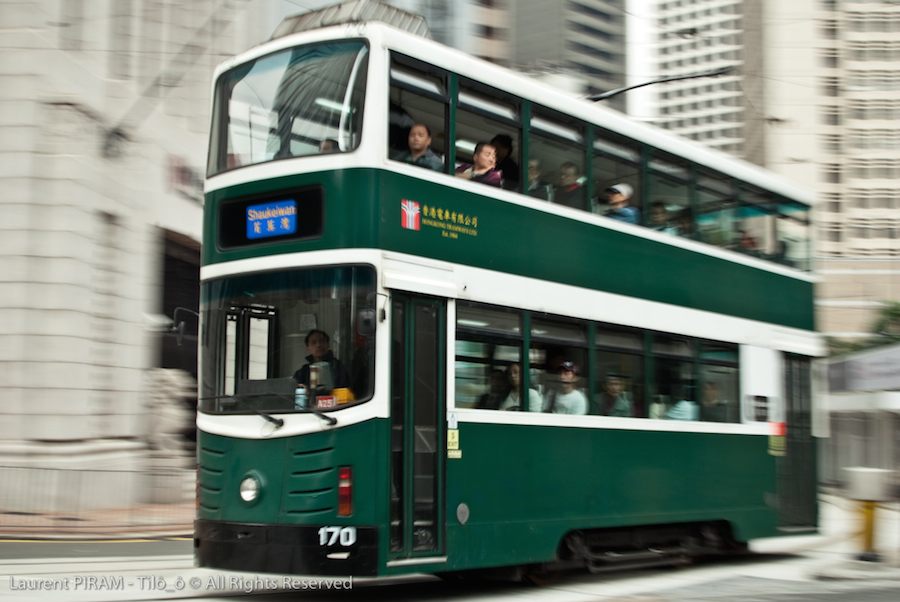A controversial new proposal to take Hong Kong’s beloved trams off the streets has sparked a wave of anger from residents who fear losing track of the city’s past.
Known as “ding-dings” for the sound of their bells, trams have served the northern coastline of the city’s main island for more than 110 years and still carry around 200,000 passengers a day.
As development changes the face of the city, sweeping away many of its historic landmarks, trams have survived in the face of growing competition from buses and the modern MTR metro system.
But a recent proposal to scrap part of the network has renewed fears that this unique piece of heritage is also under threat.
Thousands signed petitions against the suggestion that the tram service should be removed from the main financial district of Central.
The proposal was put forward to the government’s official town planning body by consultant Sit Kwok-keung, a former planner, who argues that it is too slow, blocks traffic and is unnecessary as the MTR expands.
The retired civil servant said putting the idea forward for debate is his “right and responsibility”. “I am trying to make Hong Kong transportation more efficient,” he told AFP.
The planning body will discuss the proposal in October, but the Hong Kong government has sought to reassure the travelling public by saying it had no plans to remove the trams. But unease remains.
“Public sentiment is strongly against this idea,” activist Kwong Sum-yin, who is leading the “Save The Trams” campaign, told AFP.
“Trams are forward-looking as a form of zero-emission transport when the world is talking about sustainability.”
Kwong’s group, the Clean Air Network, is instead proposing a car-free zone in Central to ease congestion and make way for more trams to run. “We are losing our history. That’s why Hong Kong people don’t want to see one more thing to go,” Kwong said.
– Nostalgia trip –
Protests triggered by Sit’s proposal have even included a “Man vs Tram” race to counter his claim trams are slow. About 40 people took on an in-service tram over nine kilometres, but even accounting for the tram’s numerous stops only a handful of competitors outran it.
One green group has galvanised 3,000 people to write to the town planning board to object to the proposal.
“It has a long history and it has got nostalgic elements,” said electrician Lau Chap-tong, 56, as he rode the tram in the residential neighbourhood of Sai Ying Pun. “It will have a special meaning to future generations, we should not get rid of it.”
Passenger Johnny Ho, in his 70s, also defended the tram.
“I always take it to see my grandchildren. What is the point of suddenly getting rid of it after so many years?” he told AFP.
With 163 cars, Hong Kong’s tram network is the world’s largest fleet of double-deck tramcars still in operation, charging a flat rate of just HKD2.30 (30 US cents) for adults to ride the 120-stop system.
Hong Kong Tramways managing director Emmanuel Vivant said the network is a “key part of what makes Hong Kong a great city” and argues that trams are not to blame for traffic congestion.
“Everyone knows the reason for the jams is the 50 percent increase in the number of vehicles over the past 10 years,” he said.
– Vanishing heritage –
Many residents of the city of seven million are increasingly focused on preserving its past, as economic development takes a toll on Hong Kong’s transport heritage.
Protests were sparked in 2007 when the government removed the Queen’s Pier for a bypass. The ferry pier was a traditional landing point for visiting dignitaries including Queen Elizabeth II and Princess Diana during the British colonial era.
There was also criticism when operators modernised tramcars in 2010.
But despite public support for the tram system, Sit says it is time for a review.
“Efficiency is the most important [thing] to every person,” he said. He added that if his proposal for Central went through, he would advocate for the complete removal of trams throughout the city.
Sit argues that trams should instead be turned into “mobile museums”. “Why should some outdated transport mode remain here?” he said.
Words: AFP
Photo: Laurant PIRAM via Flickr
Got a tip? Send it to us at hongkong@coconuts.co.




